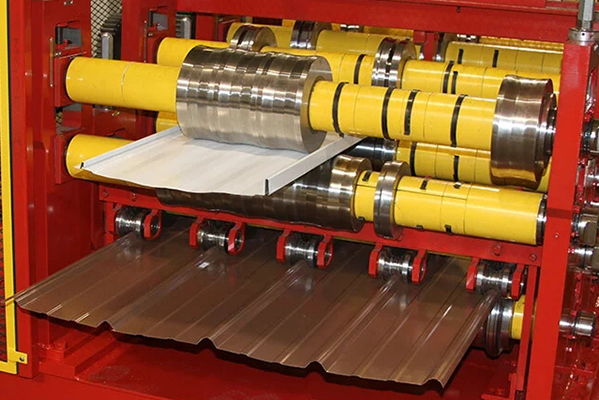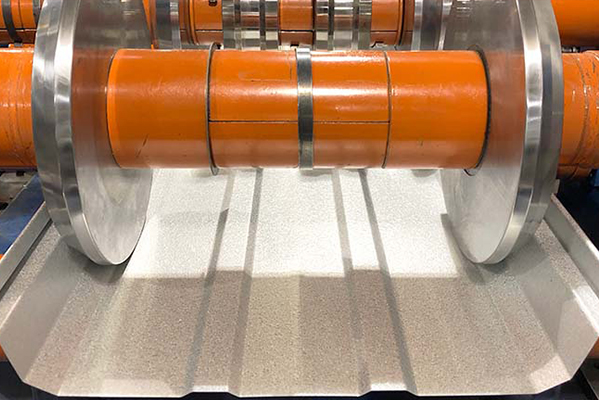Navigation Menu
Contact Us
- Email:
- info@wxavatar.com
- Address:
- Yurong Village, Yuqi Street, Huishan District, Wuxi, China.
Release Date:Apr 02, 2025 Visit:54 Source:Roll Forming Machine Factory
While metal shingle roofs offer numerous benefits, including durability, energy efficiency, and aesthetic appeal, they also come with certain hazards if not properly installed or maintained. Understanding these risks can help homeowners, contractors, and architects make informed decisions and take preventive measures. Below, we examine the key hazards associated with metal shingle lines and how to address them.
1. Improper Installation Leading to Leaks
One of the biggest risks with metal shingle lines is poor installation, which can compromise the roof’s waterproofing. Common issues include:
Insufficient overlap between shingles, allowing water seepage.
Misaligned fasteners, creating gaps where moisture can penetrate.
Incorrect flashing details around chimneys, vents, and valleys.
Mitigation:
Hire experienced metal roofing contractors.
Follow manufacturer guidelines for overlap and fastener placement.
Use high-quality underlayment and sealants.

2. Noise During Rain or Hail
Metal roofs can be louder than traditional roofing materials during heavy rain, hail, or wind. While some homeowners appreciate the sound, others find it disruptive.
Mitigation:
Install a solid roof deck (e.g., plywood or OSB) beneath the metal shingles.
Use sound-dampening underlayment.
Consider insulated metal panels for noise reduction.
3. Thermal Expansion and Contraction Issues
Metal expands in heat and contracts in cold temperatures. If shingle lines are not properly designed, this movement can cause:
Warping or buckling of panels.
Loose or popped fasteners, leading to leaks.
Noise from creaking or shifting panels.
Mitigation:
Use expansion-compatible fasteners (e.g., floating clips).
Allow for proper spacing between panels.
Choose mechanically seamed systems for better movement accommodation.
4. Risk of Denting from Impact
While metal is durable, hail, falling branches, or foot traffic can dent or scratch the surface, affecting aesthetics and performance.
Mitigation:
Opt for thicker-gauge metal (e.g., 24-gauge or higher).
Choose textured or matte finishes that hide minor dents.
Avoid walking on the roof unless necessary.
5. Galvanic Corrosion (Dissimilar Metal Reactions)
When different metals (e.g., aluminum and steel) come into contact, electrolytic corrosion can occur, weakening the roof over time.
Mitigation:
Use compatible metals for fasteners, flashings, and shingles.
Apply protective coatings or isolating materials between dissimilar metals.
Choose factory-coated metals for enhanced corrosion resistance.
6. Slipperiness When Wet or Icy
Metal roofs can become extremely slippery when wet, icy, or covered in snow, posing a danger for:
Roof maintenance workers.
Falling snow/ice accumulation near walkways.
Mitigation:
Install snow guards to prevent sudden avalanches.
Use non-slip shoes and safety harnesses when working on the roof.
Consider textured metal finishes for better traction.

7. Higher Upfront Cost Compared to Asphalt Shingles
While metal roofs last longer, their initial installation cost is higher, which may deter budget-conscious homeowners.
Mitigation:
View it as a long-term investment (lower maintenance, energy savings).
Explore financing options or tax incentives for energy-efficient roofs.
Conclusion
Metal shingle lines offer exceptional durability and performance, but they are not without risks. By understanding potential hazards—such as leaks, noise, expansion issues, and corrosion—homeowners and contractors can take proactive steps to ensure a safe, long-lasting roof. Proper installation, material selection, and maintenance are key to minimizing these risks and maximizing the benefits of metal roofing.
Would you like recommendations for specific metal shingle brands or coatings to enhance safety? Let me know how I can help further!